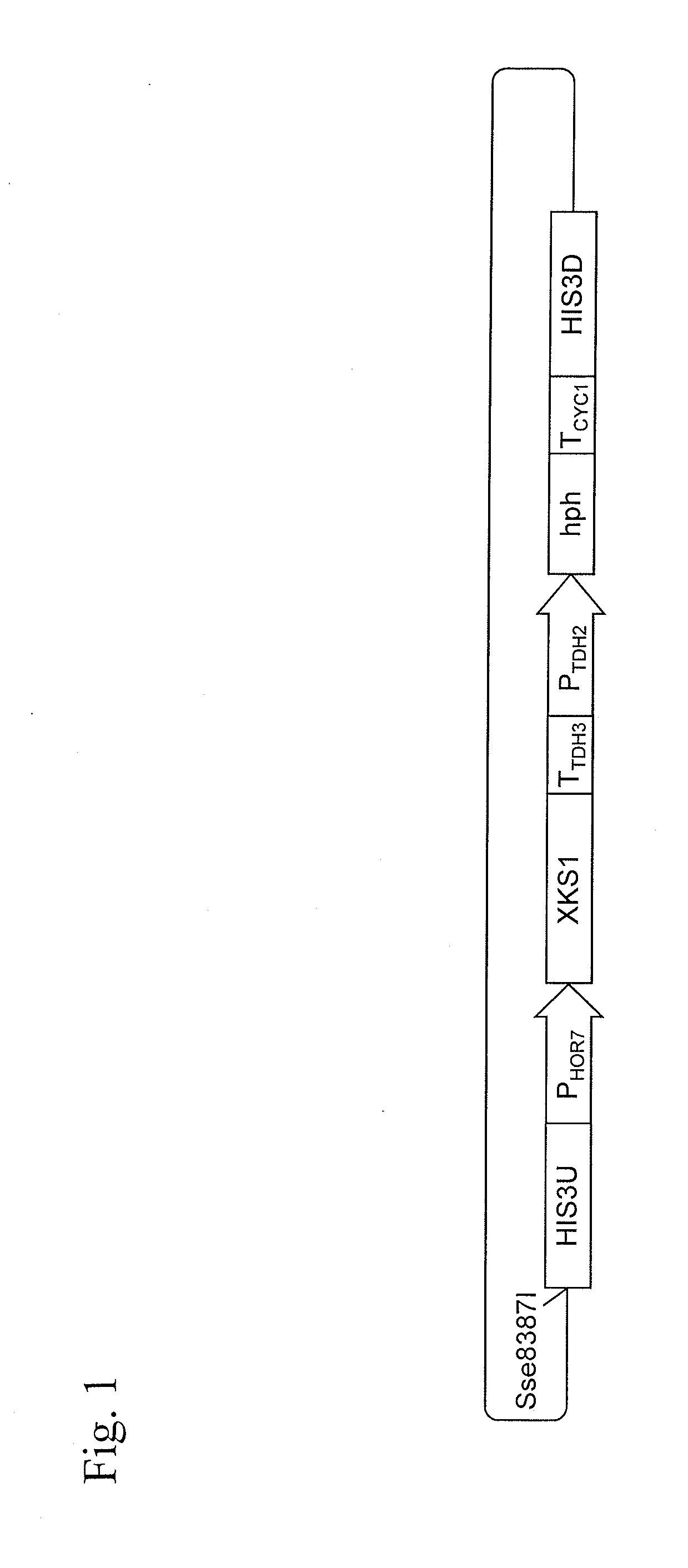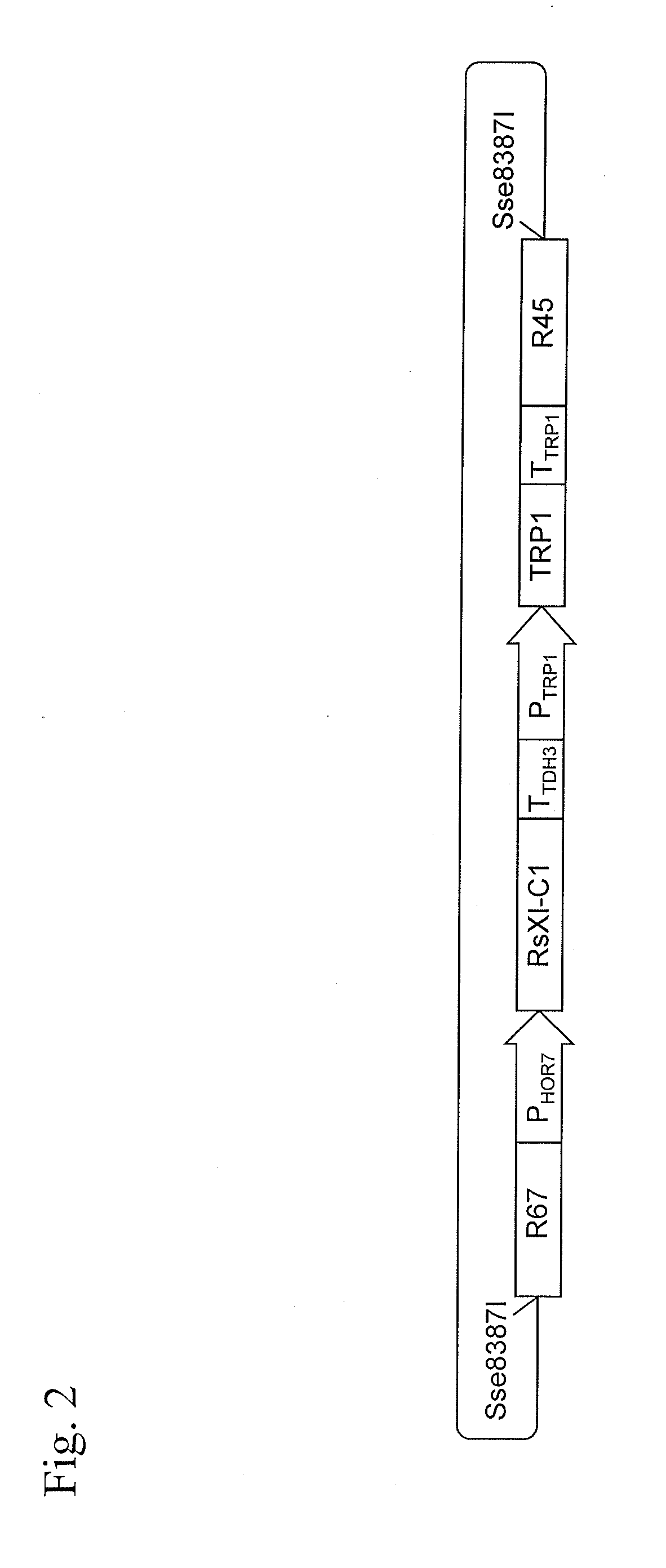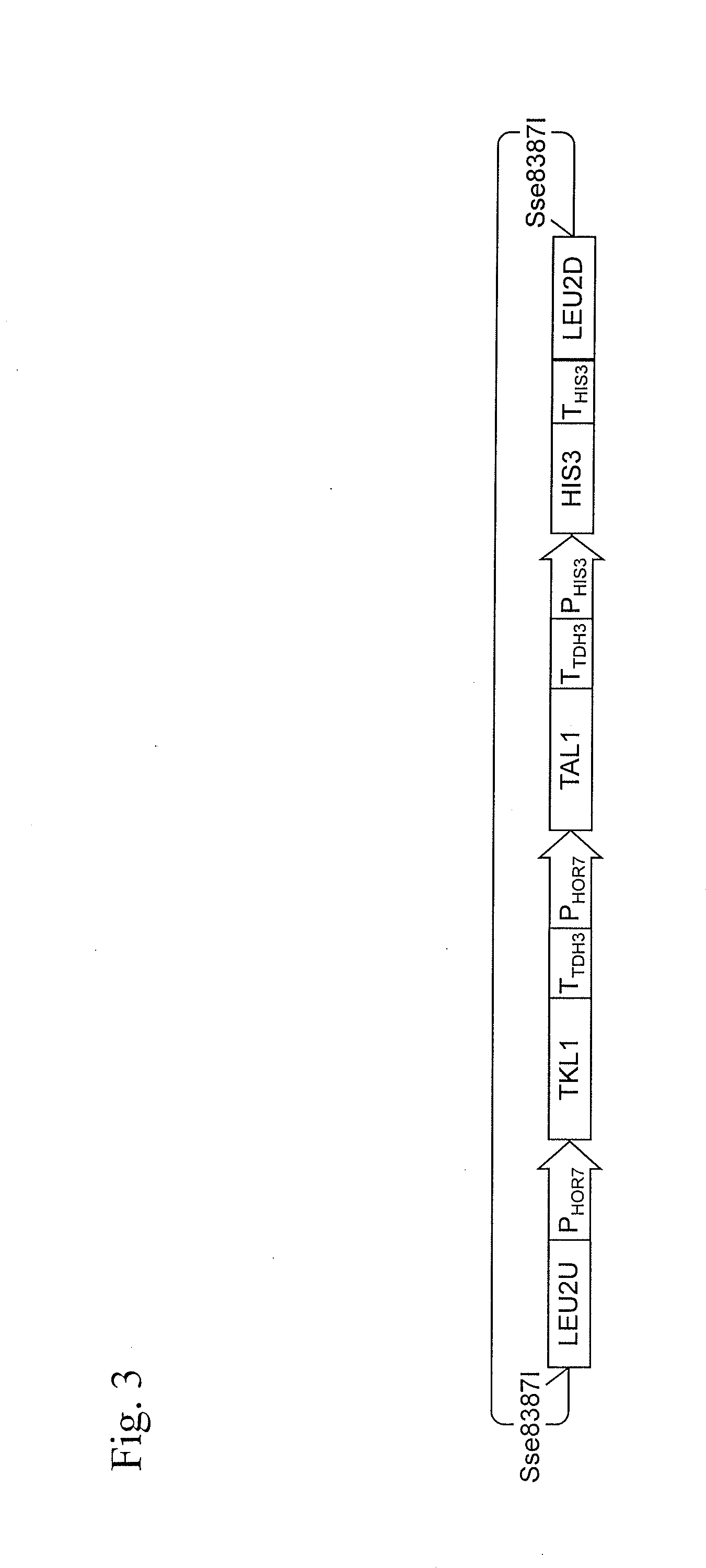Method for producing ethanol using recombinant yeast
a technology of recombinant yeast and ethanol, which is applied in the direction of fermentation, biofuels, fungi, etc., can solve the problems of inhibiting ethanol fermentation, difficult removal of acetic acid from the mash, and the effect of ethanol fermentation conducted with the use of xylose substrate, so as to achieve the effect of reducing the concentration of acetic acid in the medium, avoiding inhibition of acetic acid fermentation, and maintaining high efficiency of ethanol
- Summary
- Abstract
- Description
- Claims
- Application Information
AI Technical Summary
Benefits of technology
Problems solved by technology
Method used
Image
Examples
example 1
[0097]In the present example, a recombinant yeast strain was prepared through introduction of a xylose isomerase gene and an acetaldehyde dehydrogenase gene of E. coli (the mhpF gene), and the acetic acid metabolizing ability of the recombinant yeast strain was evaluated.
(1) Vector for XKS1 Gene Introduction
[0098]As a vector for introducing the xylulokinase (XK) gene derived from S. cerevisiae into a yeast strain, the pUC-HIS3D-P_HOR7-XKS1-T_TDH3-P_TDH2-hph-T_CYC1-HIS3D vector shown in FIG. 1 was produced. This vector comprises: the XKS1 gene, which is a XK gene derived from the S. cerevisiae NBRC304 strain in which the HOR7 promoter and the TDH3 terminator are added on the 5′ side and the 3′ side, respectively (GenBank: X61377); an upstream region of approximately 500 by (HIS3D) of the histidine synthetase (HIS3) gene and a region of approximately 500 by within such gene (HIS3D), which are regions to be integrated into the yeast genome via homologous recombination; and the hygromyc...
example 2
[0118]In the present example, a recombinant yeast strain was prepared through introduction of a xylose isomerase gene and the mhpF gene of E. coli, the adhE gene, the acetaldehyde dehydrogenase gene derived from Clostridium beijerinckii, or the acetaldehyde dehydrogenase gene derived from Chlamydomonas reinhardtii. Either or both of a pair of endogenous ADH2 genes were disrupted in recombinant yeast prepared in the present Example.
(1) Plasmid for XI, XKS1, TKL1, TAL1, RKI1, and RPE1 Gene Introduction and GRE3 Gene Disruption
[0119]A plasmid (pUC-5U_GRE3-P_HOR7-TKL1-TAL1-FBA1_P-P_ADH1-RPE1-RKI1-TEF1_P-P_TDH1-XI_N337C-T_DIT1-P_TDH3-XKS1-T_HIS3-LoxP-G418-LoxP-3U_GRE3) was prepared. This plasmid comprises, at the GRE3 gene locus, a sequence necessary for GRE3 gene disruption and introduction of the following genes into yeast: a mutated gene for which the rate of xylose assimilation has been improved as a result of substitution of asparagine at amino acid position 377 of the xylose isomer...
PUM
| Property | Measurement | Unit |
|---|---|---|
| temperature | aaaaa | aaaaa |
| temperature | aaaaa | aaaaa |
| temperature | aaaaa | aaaaa |
Abstract
Description
Claims
Application Information
 Login to View More
Login to View More - R&D
- Intellectual Property
- Life Sciences
- Materials
- Tech Scout
- Unparalleled Data Quality
- Higher Quality Content
- 60% Fewer Hallucinations
Browse by: Latest US Patents, China's latest patents, Technical Efficacy Thesaurus, Application Domain, Technology Topic, Popular Technical Reports.
© 2025 PatSnap. All rights reserved.Legal|Privacy policy|Modern Slavery Act Transparency Statement|Sitemap|About US| Contact US: help@patsnap.com



